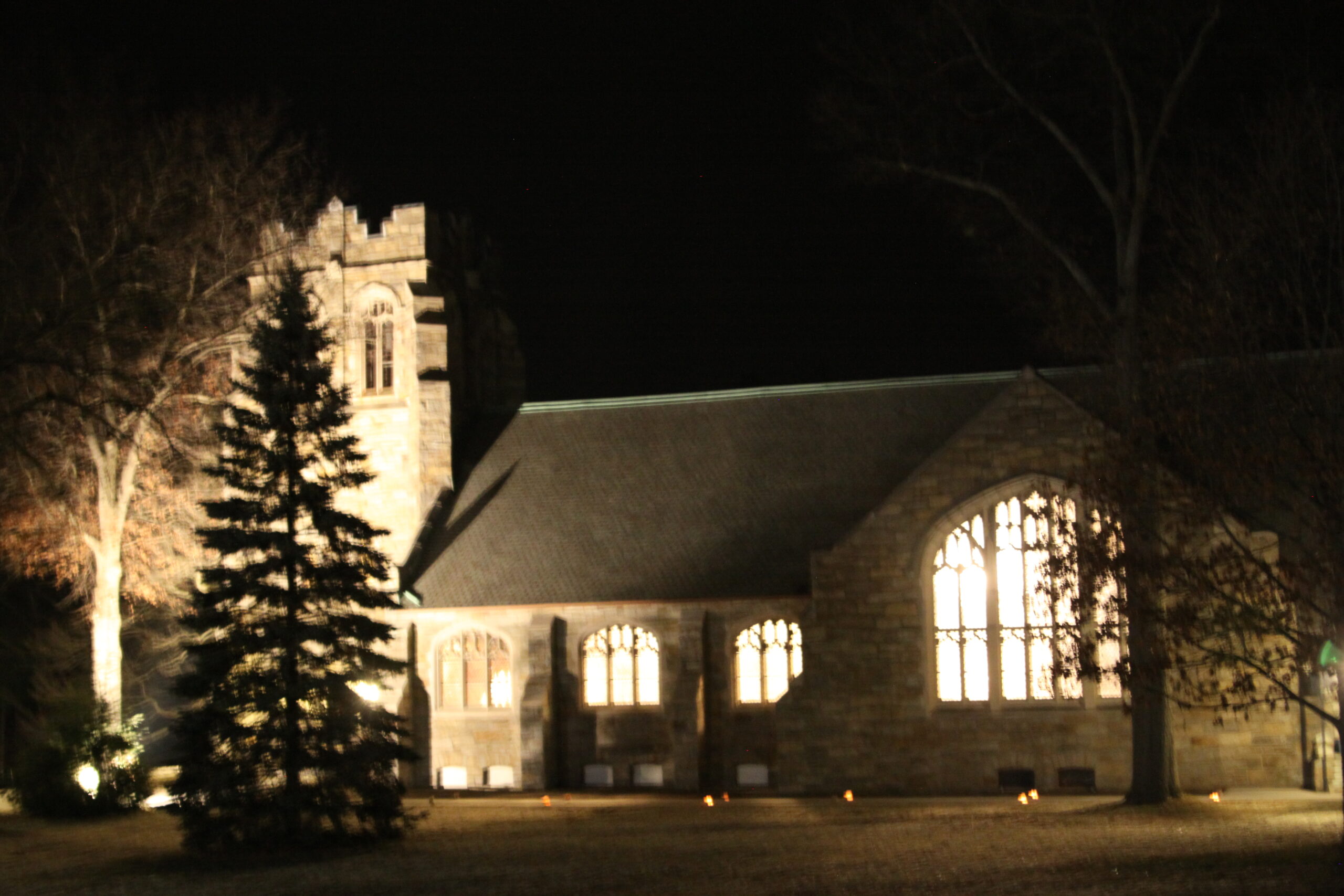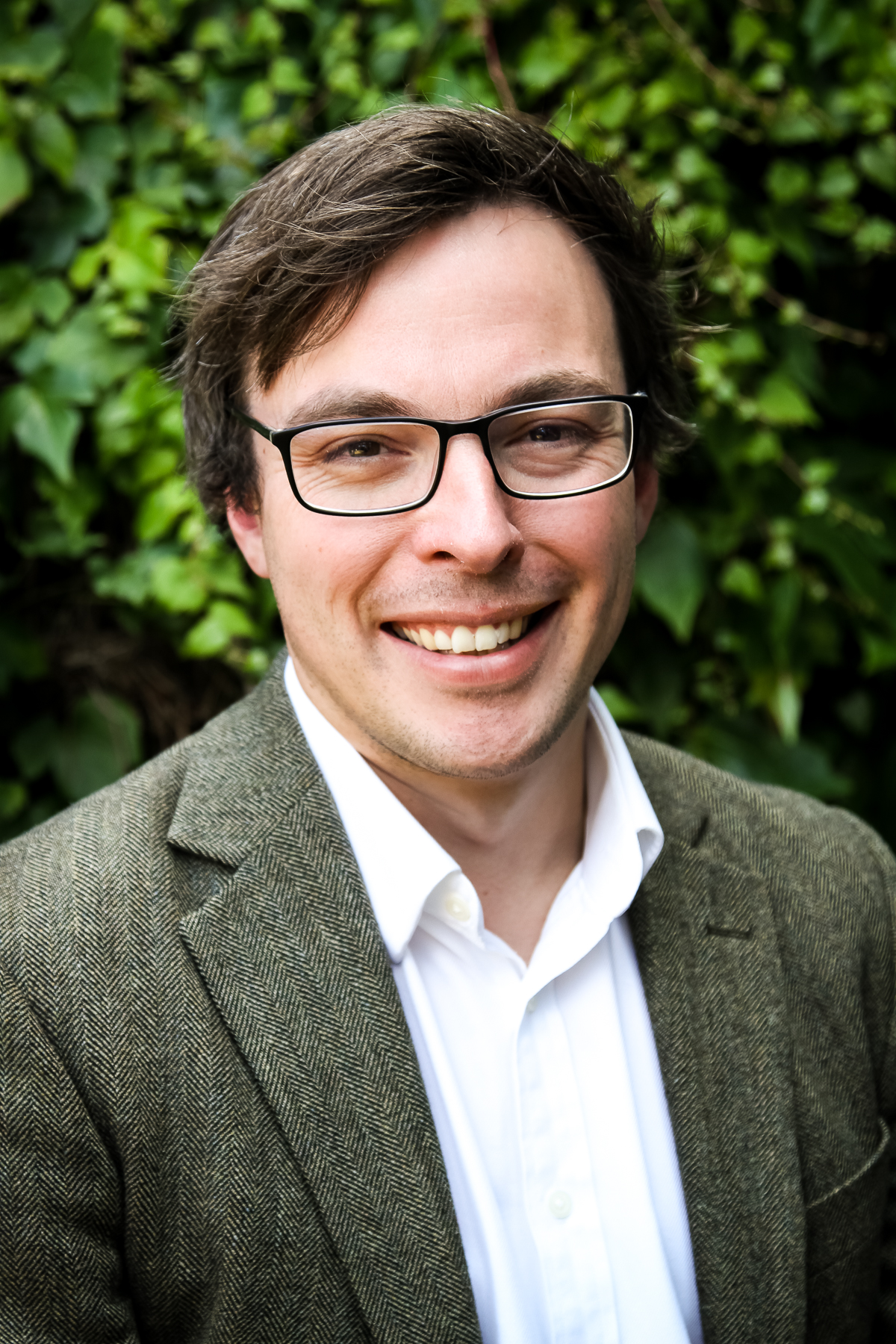Cultivating Place is a column considering our relationships to the varied places we have been planted. As followers of The One who became flesh and made his dwelling among us, who wept over the earthly Jerusalem, we will explore the unique opportunities each of us has to seek the good of our place, wherever that may be.
![]()
“…walls stand beaten by the wind, covered with rime” – The Wanderer
A mile to the north of my new home lies Winchester Cathedral, a gothic masterpiece begun during the reign of William the Conqueror. Half a mile to the south lies a 12th Century church and almshouse built by William’s grandson. Between these sites, pilgrims have passed for centuries, en route to the shrine of St Thomas Becket in Canterbury Cathedral; and along this pilgrim trail lies an unremarkable 1960s house, which we now call home.
I spent my formative years in the shadow of Worcester Cathedral. Now, some twenty years later, I have made a form of return. As rural Kentucky was to Wendell Berry, so the cathedral city has been for me: “…before, it had been mine by coincidence or accident; now it was mine by choice” [1]. This move has been a form of pilgrimage, a self-conscious return to a conception of place planted early in childhood. It has been said that while American vitality is centred on space – the dimension of wilderness and frontier – the Anglo experience, having no real space, is intimately bound up in the other dimension: that of time [2]. My land is thick with the homely clutter of the centuries, sites where life has been lived upon life, and the same spaces endlessly repurposed and re-used. Today, 21st Century culture is juxtaposed with the ancient, as Moderns wander amid “…accretions of Roman, Saxon, Viking, Medieval… softly whispering over one another” [2].
In Britain’s ecclesiastical buildings, this perception of great depths of time can become focused to an unnerving point. Peter Hitchens has written that “no properly conscious human being comes out of a cathedral or ancient parish church the same as he or she went in” [3]. These places are a heady counterpoint to the triumph of the secular in almost every other realm of Modern life. Where much of our experience is now prefabricated, homogenised, machine-made, consumer-focused, and market governed; the cathedral in particular is a redoubt of the particular, the hand-made, the non-utilitarian, and the transcendentally oriented.
In Winchester Cathedral, one steps abruptly from the chain stores and garish advertising common to every Modern city, into the immediate presence of “lovely, disturbing things” [3]. Mortuary chests containing bones of Saxon kings stand on display around the choir screen. In the nave sits a Norman font in which King Henry III was baptised. In the west window, fragments of glass shot out by Cromwell’s Roundheads during the Civil War have been lovingly salvaged and recast in a kaleidoscopic collage. To aesthetic sensitivities dulled by the homogeneity of late capitalism, the bracing experience of particularity can be overwhelming. James Howard Kunstler has coined the term “geography of nowhere” [4] to describe modern spaces – airports, chain stores, and strip malls – in which priorities of ease and utility have erased most traces of human distinctiveness. By contrast, the door of the cathedral is a portal to a distinctive somewhere: a heady expression of place. As Walter Brueggeman puts it:
“Place is space that has historical meanings, where some things have happened that are now remembered and that provide continuity and identity across generations. Place is space in which important words have been spoken that have established identity, defined vocation, and envisioned destiny” [5].
This transformation is not accidental. The cathedral becomes a place as a particular conception of human purpose and flourishing is worked out, generation by generation, within its walls. As running water slowly cuts a channel into bedrock, attentive human engagement over centuries forges a distinctive physical place whose aesthetic becomes one with its unique liturgical purpose. From the cruciform floor-plan, to the soaring vaults that lift the eyes heavenward, to the stained glass diffusing multi-coloured light onto the stonework, to the altar where the people gather together to share in the Eucharist – every element stands for something beyond itself. In the geography of nowhere – shaped by very different priorities – the cathedral stands as a subversive witness to beauty, truth, and goodness.
One of Cormac McCarthy’s characters remarks that “scars have the strange power to remind us that our past is real” [6]. In the midst of Modern disenchantment ‘storied places’ – places that have meaning because of the history lodged there [5] – perform just such a role. They are stakes driven through the tree-rings of history, tapping a heartwood still resonating with living sap. The cathedral’s memory reaches back to a time of enchantment, of beliefs and practices ‘lovely and disturbing’ to Modern sensibilities. Often called ‘timeless’, cathedrals subvert secular time not through a denial of history, but through their testament to an entirely different accounting of time: not the post-Enlightenment lockstep of this-follows-that – chronos – in which Modernity has sought to embed us, but ‘deep time’ – kairos – in which the presence of God is rendered immediate to us in the liturgical life of his gathered people. The liturgy of the church, and centrally the Eucharist, is a participation in the death and resurrection of Christ, in whom and by whom we are even now mutually indwelt [7]. The physical places in which we gather to affirm and deepen this participation are thus not redundant relics, but stages for vital and immediate realities, the here-and-now presence of Christ with his redeemed people. As Kierkegaard puts it:
“It is… eighteen hundred years since Jesus Christ walked here on earth, but this is certainly not an event like other events, which once they are over pass into history… No, his presence here on earth never becomes a thing of the past…” [8]
In playing host to the bending of the eternal to the temporal, the cathedral is a foothold of what is most real in the midst of what is illusory. Its rich past and ancient fabric are constantly rendered relevant as, in the liturgy and sacraments, ‘deep time’ – kairos – cuts again and again across the tick-tock of secular time. In a real sense, those solemnly gathering in the cathedral to keep vigil on Good Friday will be closer in that moment to the day of Christ’s crucifixion than they are to next Midsummer’s Day [9].
It has taken me nearly twenty years to fully realise that – as an embodied being – the call to “desire a better country” [10] cannot entail condemning the creation my Father called ‘good’. Since Eden, via tabernacle and temple, and most emphatically in the incarnation, God has always met his people in the physical world he made, and calls them to rich participation in this same world. As Jennifer Craft observes: “…divine-human meeting will always first be particular; as humans we do not experience things except through particular places…” [11]. For embodied beings, the relevance of the physical to worship cannot be willed away: the only choice we have is whether the physical context of our worship adorn its ends, or hinders them. I finally rationally assent to what my young self, growing up alongside Worcester Cathedral, knew intuitively: that these beautiful places, far from being distractions, can serve to strengthen my longing for the day Christ makes all things new. After all, it is not disembodied souls who groan for redemption, but the whole embodied creation [12]. Nature is not destroyed by grace, but perfected by it [13]. The aesthetic glories of the cathedral are but a foretaste of how all things will be on the great resurrection morning. As Junius Johnson has written:
“The purpose of beauty is that in seeing the creaturely thing, we might be made capable of seeing the Creator whose creature it is. Beauty, without being self-negating, points us beyond itself to the God of all beauty” [14]
Where Nietzsche’s madman saw in church buildings only the “tombs and sepulchres of God” [15], I see in my adopted cathedral something vital: a reminder – simultaneously ancient but immediate – of “light and high beauty” standing for ever beyond the reach of the shadows, in what can often seem – spiritually speaking – a forsaken land [16].
I have brought my family to live in proximity to this storied place and its liturgical life because they daily remind me – in the key of my specific history – that I have a wondrous calling as an image bearer: a manifesto to wield sub-creative gifts in instituting, tending, and conserving oases of goodness, truth, and beauty, amid the ‘geography of nowhere’; places where grace at least partially perfects nature, and by that grace, eyes may perhaps be lifted to the Father of Lights. My family only has the privilege of proximity to this place because a millennium ago, men and women began laying brick on brick to this same end. I take encouragement from their faith, and the realisation that we can all – regardless of geographic context, or history – take up the arms of beauty and partake in the same manifesto. To amend the old proverb: while the best time to start building a cathedral may have been a millennium ago, the second-best time is today.
![]()
Bibliography
1 – Berry, Wendell. The Art of the Commonplace: The Agrarian Essays of Wendell Berry. Catapult, 2018.
2 – Stone Age Herbalist. “Midwinter Melancholia”. 15 December 2021. https://www.stoneageherbalist.com/p/midwinter-melancholia
3 – Peter Hitchens. “A Church that Was”. 1 May 2016. https://www.firstthings.com/article/2016/05/a-church-that-was
4 – Kunstler, James Howard. Geography of Nowhere: The Rise and Decline of America’s Man-made Landscape. Simon and Schuster, 1994.
5 – Brueggemann, Walter. The Land: Places as Gift, Promise, and Challenge in Biblical Faith, 2nd ed. Minneapolis: Fortress Press, 1989.
6 – McCarthy, Cormac. The Crossing. Vol. 2. Pan Macmillan, 2010.
7 – John 15:4 (ESV)
8 – Kierkegaard, Søren. Kierkegaard’s Writings, XX, Volume 20: Practice in Christianity. Vol. 33. Princeton University Press, 2013.
9 – Taylor, Charles. A Secular Age. Harvard University Press, 2007
10 – Hebrews 11:16 (ESV)
11 – Craft, J.A., 2013. Making a Place on Earth: Participation in Creation and Redemption Through Placemaking and the Arts (Doctoral dissertation, University of St Andrews).
12 – Romans 8:22-24 (ESV)
13 – Laverty, Rhys. “Somewhere in Chessington”. 17 February 2023. https://www.plough.com/en/topics/life/relationships/somewhere-in-chessington
14 – Johnson, Junius. The Father of Lights (Theology for the Life of the World): A Theology of Beauty. Baker Academic, 2020.
15 – Nietzsche, Friedrich. The Gay Science. DigiCat, 2022.
16 – Tolkien, John RR. The Lord of the Rings. Part 2: The Two Towers. Allen and Unwin, 1966.
The featured image, “Sage Chapel,” is courtesy of Lancia E. Smith and is used with her glad permission for Cultivating.
Leave a Reply
A Field Guide to Cultivating ~ Essentials to Cultivating a Whole Life, Rooted in Christ, and Flourishing in Fellowship
Enjoy our gift to you as our Welcome to Cultivating! Discover the purpose of The Cultivating Project, and how you might find a "What, you too?" experience here with this fellowship of makers!


Add a comment
0 Comments